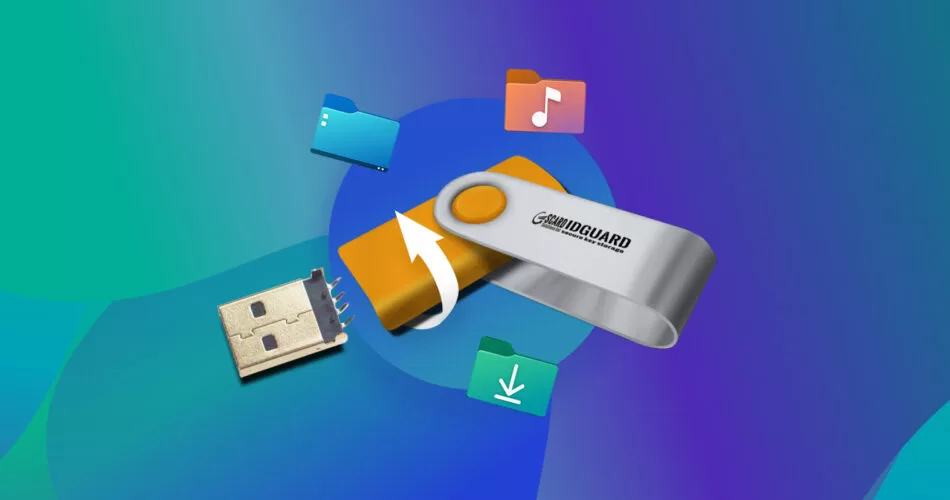A USB flash drive is a convenient way to store and transfer data, but it can become corrupted, physically damaged, or undetectable due to improper use, virus infections, or hardware failure. If you’re struggling to recover important files from a broken USB drive, this guide will walk you through the best solutions, from DIY fixes to professional recovery methods.
1. Identify the Type of USB Drive Damage
Before attempting recovery, determine whether the issue is physical or logical:
🛑 Logical Damage (Software Issues):
✔️ USB is detected but files are missing or corrupted.
✔️ The system asks to format the USB drive.
✔️ Files appear as shortcuts or unreadable.
🛠️ Physical Damage (Hardware Issues):
✔️ USB connector is broken or loose.
✔️ Drive is not detected at all.
✔️ The device heats up abnormally.
Tip: If your USB drive is physically damaged, skip to Section 5 (Professional Recovery Options).

How to Recover Data from a Broken USB Drive: Step-by-Step Guide
2. Try Basic Troubleshooting First
Before diving into recovery tools, try these quick fixes:
🔹 Check USB Port & Try Another Computer
👉 Sometimes, the issue is with the USB port, not the drive. Plug it into a different port or PC.
🔹 Restart Your Computer
👉 A system reboot can resolve USB detection issues.
🔹 Check in Disk Management (Windows) or Disk Utility (Mac)
👉 Windows: Press Win + X → Select Disk Management → Look for your USB drive.
👉 Mac: Open Disk Utility from Applications → Utilities.
If the drive appears but is unformatted, proceed to Section 3.
3. Recover Data Using USB Recovery Software (Logical Damage)
If your USB drive is still detected but inaccessible, use data recovery software:
Windows & Mac Recovery Software
✅ Recuva (Windows) – Free & easy to use.
✅ EaseUS Data Recovery Wizard (Windows/Mac) – Powerful recovery tool.
✅ Disk Drill (Windows/Mac) – Recovers lost partitions.
✅ R-Studio (Advanced Users) – For deep recovery.
How to Use USB Data Recovery Software
1️⃣ Download & Install a recovery tool (e.g., Recuva).
2️⃣ Insert your USB drive into the PC.
3️⃣ Open the software & select the USB drive.
4️⃣ Run a Deep Scan to search for lost files.
5️⃣ Select Recover and save the files to a different drive (not the USB).
Tip: Never save recovered files back to the damaged USB drive!
4. Fix Corrupted USB Drive Without Formatting
If your USB drive is corrupt but detected, try these fixes:
🔹 Fix USB Drive with CHKDSK (Windows)
1️⃣ Open Command Prompt as Administrator.
2️⃣ Type:
(Replace X with your USB drive letter).
3️⃣ Press Enter and wait for the process to complete.
Tip: CHKDSK can repair bad sectors and recover lost files.
🔹 Assign a New Drive Letter
1️⃣ Open Disk Management → Right-click your USB drive.
2️⃣ Select Change Drive Letter and Paths → Click Add/Change.
3️⃣ Assign a new letter (e.g., “Z”) and click OK.
5. Recover Data from a Physically Damaged USB Drive
If your USB drive is physically broken (e.g., snapped connector, bent pins), try:
🔹 DIY Fix: Use a USB-to-SATA Adapter – If the storage chip is intact, remove it and connect it to another adapter.
🔹 Resolder the USB Connector – If the connector is loose, a technician may be able to reattach it.
🔹 Professional Data Recovery Services – If DIY methods fail, consult a professional recovery lab.
Best Professional Recovery Services:
✔️ DriveSavers Data Recovery
✔️ Ontrack Data Recovery
✔️ Secure Data Recovery
Tip: If the data is highly valuable, don’t attempt DIY repairs—seek expert help.
6. Prevent Future USB Drive Failures
To avoid losing data in the future, follow these best practices:
✅ Backup Important Files Regularly – Use cloud storage or an external drive.
✅ Eject USB Properly – Always use “Safely Remove Hardware” before unplugging.
✅ Avoid Physical Damage – Use a protective case to prevent breakage.
✅ Scan for Viruses – Protect your USB from malware infections.
Final Thoughts
Recovering data from a broken USB drive depends on the type of damage. If it’s a logical issue, use data recovery software like Recuva or EaseUS. If it’s physically damaged, consider DIY fixes or seek professional recovery services. Always maintain regular backups to prevent data loss in the future!
🚀 Try these methods and recover your valuable files today!
